#Helen Schlesinger
Text
Review: Trying (Series 3)
Review: Trying (Series 3)
The third series of Apple TV’s Trying proves a bit of a disappointment as it goes too sweet
“Never mind the spuds love, this is an emergency”
Over two seasons, Apple TV series Trying has utterly charmed me, Andy Wolton’s writing nailing the perfect bittersweet Britflick tone to make this a genuinely affecting look at the challenges of contemporary city living for a no-longer-quite-that-young…

View On WordPress
#Anthony Taylor#Clare Higgins#Denis O&039;Hare#Ekow Quartey#Esther Smith#Helen Schlesinger#Imelda Staunton#Jade Ogugua#James Doherty#John Biggins#John Hopkins#Karl Collins#Marian McLoughlin#Molly Harris#Nneka Okoye#Oliver Chris#Paula Wilcox#Phil Davis#Rafe Spall#Rekha John-Cheriyan#Richard Teverson#Roderick Smith#Sarah Thom#Shin-Fei Chen#Siân Brooke#Steven Meo#Taj Atwal#Tom Bennett
0 notes
Text

Title: National Theatre Live: Coriolanus
Rating: NR
Director: Josie Rourke, Tim Van Someren
Cast: Tom Hiddleston, Mark Gatiss, Deborah Findlay, Birgitte Hjort Sørensen, Elliot Levey, Jacqueline Boatswain, Peter de Jersey, Helen Schlesinger, Hadley Fraser, Alfred Enoch, Mark Stanley, Rochenda Sandall, Dwane Walcott, Joe Willis
Release year: 2014
Genres: drama, history
Blurb: When an old adversary threatens Rome, the city calls once more on her hero and defender: Coriolanus. But he has enemies at home, too. As famine threatens the city, the citizens' hunger swells to an appetite for change, and on returning from the field, Coriolanus must confront the march of realpolitik and the voice of an angry people.
#national theatre live coriolanus#coriolanus#nr#josie rourke#tim van someren#tom hiddleston#mark gatiss#deborah findlay#birgitte hjort sørensen#birgitte hjort sorensen#elliot levey#2014#drama#history
4 notes
·
View notes
Text
Born To Kill COMPLETE SERIES 2005-2016
“Going back to the age-old Nature vs Nurture debate, a good way to think about it is that genetics provide an individual with a spectrum and the individual’s environment, developmental and otherwise, determines where you lie on it. A predisposition may lie dormant for eternity, but feed it a stressful environment and increased risk factors such as malnourishment and trauma, and it will manifest. Clinical facts must be tempered with ethical concerns when applying science to society.” Source
)c(
Season 1
S01E01 Fred West
S01E02 Harold Shipman
S01E03 Jeffrey Dahmer
S01E04 Myra Hindley
S01E05 The Washington Snipers
S01E06 Ivan Milat
)c(
Season 2
S02E01 Ted Bundy
S02E02 Charles Starkweather
S02E03 John Wayne Gacy
S02E04 Aileen Wuornos
S02E05 Richard Chase
S02E06 Albert DeSalvo
)c(
Season 3
S03E01 Gary Ridgway
S03E02 Edmund Kemper
S03E03 Richard Ramirez
S03E04 Donald Gaskins
S03E05 David Berkowitz
S03E06 Dennis Nilsen
)c(
Season 4
S04E01 Charles Manson
S04E02 Dennis Rader
S04E03 Beverly Allitt
S04E04 Hillside Stranglers (Kenneth Bianchi and Angelo Buono)
S04E05 Colin Ireland
S04E06 Herbert Mullin
)c(
Season 5
S05E01 Peter Sutcliffe
S05E02 Donald Nielson
S05E03 Patrick Mackay
S05E04 John Linley Frazier
S05E05 Cary Stayner
S05E06 The Briley Brothers
S05E07 Hadden Clark
S05E08 Paul Bernardo and Karla Homolka
S05E09 Thor Christiansen
S05E10 Dale Hausner and Samuel Dieteman
S05E11 Wesley Shermantine and Loren Herzog
S05E12 Douglas Clark and Carol Bundy
)c(
Season 6
SE06E01 Robert Napper
SE06E02 John Duffy and David Mulcahy
SE06E03 Gerald and Charlene Gallego
SE06E04 Levi Bellfield
SE06E05 Tony Costa
SE06E06 Richard Cottingham
SE06E07 Cleophus Prince Jr.
SE06E08 Sean Gillis
SE06E09 Timothy Wilson Spencer
SE06E10 David Alan Gore and Fred Waterfield
SE06E11 David Carpenter
SE06E12 Bobby Joe Long
)c(
Season 7
SE07E01 Peter Moore
SE07E02 Trevor Hardy
SE07E03 William Suff
SE07E04 Charles Albright
SE07E05 Allan Legere
SE07E06 Robert Reldan
)c(
Born to Kill/Class of Evil 2017
Season 1
SE01E01 Peter Tobin
SE01E02 Altemio Sanchez
SE01E03 Alton Coleman and Debra Brown
SE01E04 Stephen Griffiths
SE01E05 Graham Young
SE01E06 Joanna Dennehy
)c(
Killing Spree 2014
Season 1
SE01E01 Suffolk Strangler
SE01E02 Terror in Paradise
SE01E03 Northumbria Rampage
SE01E04 The Miami Murders
SE01E05 Horror at the Mall
SE01E06 Columbine Massacre
)c(
Season 2
SE01E01 The Hungerford Massacre
SE01E02 Soho Nail Bomber
SE01E03 New York Knifings
SE01E04 Revenge Cop Killer
SE01E05 The Family Slayer
SE01E06 Woman On The Rampage
)c(
Criminal psychologists: Louis B Schlesinger, Helen Morrison, Katherine Ramsland, David Wilson and Robert Ressler.
Narrator: Christoper Slade
TwoFour productions
#true crime#serial killers#crime after crime#criminal investigations#documentary#youtube#wayne henley#spree killers#born to kill#class of evil#jeffery dahmer#Ted Bundy#ed kemper#carol Bundy#peter sutcliffe#Norway Massacre#Bill Suff#Pee Wee Gaskins#The Black Panther#Richard Cottington#myra hindley#Fred West#Charles Starkweather
18 notes
·
View notes
Text
Birthdays 10.15
Beer Birthdays
Doug Odell (1952)
Julie Nickels (1959)
Five Favorite Birthdays
Michel Foucault; philosopher, historian (1926)
Friedrich Nietzsche; German philosopher (1844)
Jim Palmer; Baltimore Orioles P (1945)
James Tissot; French artist (1836)
P.G. Wodehouse; English writer (1881)
Famous Birthdays
Italo Calvino; Italian writer (1923)
Richard Carpenter; pop singer (1946)
Chris De Burgh; rock singer (1948)
Sarah Ferguson; British royalty (1959)
John Kenneth Galbraith; economist (1908)
Samuel Adams Holyoke; composer (1762)
Lee Iacocca; businessman, Pinto-maker & apologist (1924)
Helen Hunt Jackson; writer (1830)
Tito Jackson; pop singer (1953)
Emerill Lagasse; chef (1959)
Linda Lavin; actor (1937)
Mervyn LeRoy; film director (1900)
Penny Marshall; actor, film director (1942)
Warren Miller; sports film director (1924)
Stacy Peralta; skateboarder, film director (1957)
Jean Peters; actor (1926)
Mario Puzo; writer (1921)
Tanya Roberts; actor (1955)
Arthur Schlesinger Jr.; historian (1917)
Bruno Senna; Braziliam race car driver (1983)
C.P. Snow; English writer, physicist (1905)
John L. Sullivan; boxer (1858)
Virgil; Roman writer (70 C.E.)
0 notes
Text
Hedwig Dohm
Hedwig Dohm, scrittrice femminista tedesca è stata la prima intellettuale a parlare di gender.
Tra le prime, nel 1873, a chiedere il diritto di voto per le donne, fondando e partecipando a numerose associazioni, per la rivendicazione del suffragio femminile.
Nata col nome di Marianne Adelaide Hedwig Schlesinger a Berlino, il 20 settembre 1831, in una famiglia di origini ebraiche era la terza di diciotto figlie. Il padre, Gustav Adolph Gotthold Schlesinger, produttore di tabacco, non poté però sposare la madre Wilhelmine Henriette Jülich, in quanto figlia illegittima, fino al 1838. L’uomo si convertì al protestantesimo nel 1817 e nel 1851 mutò il proprio cognome in Schleh. A lei e alle sue sorelle ragazze venne consentita un’istruzione estremamente limitata, a differenza dei fratelli che poterono continuare gli studi. Ma Hedwig, spirito libero e rivoluzionario, leggeva in segreto tutto quello che le capitava tra le mani, formandosi da autodidatta.
Data la sua infanzia, le sue rivendicazioni si concentrarono prevalentemente sulla parità di istruzione per le donne e sui loro diritti politici, come quello di voto.
Nel 1853 sposò Ernst Dohm, redattore della rivista satirica Kladderadatsch con cui ebbe cinque figli e figlie che ricevettero tutte una solida educazione e formazione professionale. La loro casa divenne un prestigioso salotto attraversato dai più importanti personaggi intellettuali berlinesi dell’epoca.
Nel 1867, dopo un viaggio in Spagna con la famiglia, divulgò la sua prima opera dal titolo La letteratura nazionale spagnola nel suo sviluppo storico.
Convinta che non era necessario per una donna finire nella gabbia delle aspettative sociali, l’unico elemento che garantiva la parità di ruoli tra uomo e donna era l’indipendenza economica.
Su questi temi tra il 1872 e il 1879 ha scritto quattro saggi femministi talmente rivoluzionari da farle valere una fama immediata ma anche feroci critiche, non solo dagli ambienti conservatori, ma anche dalle file del movimento femminile dell’epoca.
Le sue teorie apparivano troppo radicali, perché concentrate sulla domanda di una migliore educazione e assistenza per le donne in maggiore fragilità sociale, come madri single o affette da handicap o ritardi.
Nell’opera “L’emancipazione scientifica delle donne”, del 1874, parla di pari dignità umana per le donne criticando e svilendo le teorie “medico-scientifiche” dell’epoca sulla naturale inferiorità della donna.
Sulla fine degli anni Settanta dell’Ottocento ha pubblicato parecchie commedie, messe in scena con grande successo nel Teatro Reale di Berlino.
Nel 1876 ha ristampato saggi e articoli socio-politici in un volume dal titolo “La natura delle donne e del diritto. La questione femminile. Due trattati di proprietà e il suffragio femminile”.
Dopo la morte del marito, avvenuta nel 1883, si è dedicata a scrivere romanzi e racconti brevi.
Quando l’ala radicale del movimento femminista si rafforzò, tornò a pubblicare riflessioni politiche in giornali e riviste e non ha smesso fino alla fine dei suoi giorni.
Tra la fine dell’Ottocento e i primi anni del Novecento è stata una figura di primo piano nelle associazioni e nella vita sociale e culturale tedesca.
È stata cofondatrice di diverse organizzazioni come l’Associazione Donne della Riforma (successivamente Associazione dell’Educazione Femminile e degli Studi delle Donne), che promuoveva la riforma del sistema educativo.
Nel 1889 si unì alla Società del Bene Femminile e all’età di 74 anni prese parte alla riunione inaugurale dell’Associazione per la maternità e la riforma sessuale di Helene Stöckers.
Nel 1904 è diventata Presidente onoraria della Fondazione della DVF – Associazione tedesca per il suffragio femminile che si batteva, tra le altre cose, per il diritto al congedo di maternità.
Allo scoppio della Prima Guerra Mondiale è stata tra i pochi e poche intellettuali a prendere una posizione netta contro la guerra, definendosi pacifista intransigente e supportando la sua posizione con articoli che scriveva, per lo più, sulla rivista L’Azione e nel suo il saggio L’abuso della Morte del 1915.
Ha vissuto abbastanza per vedere riconosciuto il diritto di voto alle donne in Germania nel 1918, è morta poco dopo, il 1° giugno 1919 a Berlino, aveva 88 anni.
Nel 2007 la Federazione dei Giornalisti le ha dedicato un memoriale.
0 notes
Text
The Believers (1987)
Director: John Schlesinger
Starring: Martin Sheen, Helen Shaver, Harley Cross, Jimmy Smits, Robert Loggia
A New York psychiatrist finds that a brujería-inspired cult, which believes in child sacrifice, has a keen interest in his own son.
‘The Believers’ is based on a novel called ‘The Religion’, and is a faith-based horror thriller that deals with black magic.
Martin Sheen stars as…
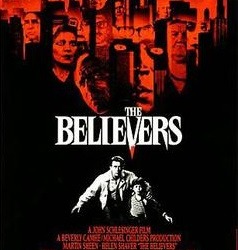
View On WordPress
0 notes
Text
July 10 ZODIAC
Horoscope and character for those brought into the world on July 10
They are happy, lively and wonderful mates, albeit too reckless in affection. They need to enjoy benevolence and diversion. They appreciate games and any type of amusement, taking little consideration of obligation. Regardless of that, they care profoundly about their standing and dread analysis, to which they are exceptionally delicate. They are very serene individuals in conduct. They appreciate extravagance in any structure and endeavor to have it regardless of whether their assets scarcely permit it. They like ocean travel. Absolutely adamant, they can deftly guard themselves against the assaults of their foes and shrewdly clear their path through life, uninterested about the rules that a great many people observe. Nor do they spare any work in their battle for riches. They appreciate official functions and customs. In spite of the fact that they appreciate storing cash, they happily spend it on dress and adornments. What would it be a good idea for them to be careful about? Their unnecessary awareness hurts them throughout everyday life, as it doesn't permit them to ascend to places of government and frequently stops them. They sincerely connect with others so firmly that they frequently find it challenging to differentiate between their own sentiments and those of others. Hence, their current circumstance can significantly impact them. All of the limit and close to home overabundances harms them profoundly. What compromises them? Misconceptions with family members and monetary misfortunes look for them. They can have blissful relationships with individuals brought into the world during the times of October 22 to November 23 and February 19 to Walk 20.
July 10 ZODIAC
Assuming that your birthday is on July 10, your zodiac sign is Malignant growth
July 10 - character and character
character: mindful, energetic, clever, discourteous, indiscreet, reckless calling: drug specialist, author, excavator tones: silver, gold, purple stone: fluorite creature: pig plant: Larkspur blossom fortunate numbers: 4,8,11,24,48,59 very fortunate number: 1
Occasions and observances - July 10
Beatles Day
Chile: Custodian's Day.
Mauritania: Military Day.
Argentina: Trader's Day.
Bahamas: Autonomy Day.
July 10 VIP birthday celebrations. Who was conceived that very day as you?
1902: Kurt Birch, German physicist (d. 1958). 1902: Nicolდ¡s Guillდ©n, Cuban writer (d. 1989). 1902: Antulio Sanjuan Ribes, Spanish theater entertainer and writer (d. 1982). 1903: Werner Best, German legal scholar and Nazi pioneer (d. 1989). 1903: John Wyndham, English author (d. 1969). 1905: Wolfram Sievers, Nazi German physicist (d. 1948). 1913: Salvador Espriu, Spanish artist (d. 1985). 1914: Joe Shuster, Canadian visual artist (d. 1992). 1920: Owen Chamberlain, American physicist, 1959 Nobel Laureate in Physical science (d. 2006). 1921: Eunice Kennedy Shriver, American extremist (d. 2009). 1921: Jake LaMotta, American fighter. 1921: Francisco de Asდs Sancho Rebullida, Spanish legal scholar and foralista (f. 1995). 1923: Baron Hamner Jr., American creator and maker (d. 2016). 1925: Mahathir container Mohamad, Malaysian State leader. 1926: Algeria Laya, Venezuelan instructor, scholar and political dissident (f. 1997) 1926: Fred Gwynne, American entertainer (f. 1993). 1928: Bernard Smorgasbord, French painter (d. 1999). 1928: Alejandro de Tomaso, Italian-Argentine hustling driver (d. 2003). 1931: Alice Munro, Canadian author. 1934: Jerry Nelson, American puppeteer, maker of The Muppets (d. 2012). 1934: Adelma Gდ³mez, Argentine instructor and organist (d. 2011). 1934: Sondra Schlesinger, American virologist. 1938: Paul Andreu, French draftsman. 1938: Tura Satana, American entertainer (d. 2011). 1940: Helen Donath, American soprano. 1941: David G. Hartwell, American distributer (d. 2016). 1941: Montserrat Grases, a youthful Spanish lady, pronounced revered by the Catholic Church (d. 1959). 1942: Rodrდguez, American performer and author. 1942: Ronnie James Dio, American performer (d. 2010). 1943: Arthur Ashe, American tennis player (f. 1993). 1945: Ron Glass, American entertainer (d. 2016). 1945: Virginia Swim, English tennis player. 1946: Sue Lyon, American entertainer. 1946: Stuart Christie, English author and supervisor. 1947: Arlo Guthrie, American performer. 1950: Greg Kihn, American vocalist. 1952: Liudmila Turდshcheva, Russian tumbler. 1954: Neil Tennant, English performer, of the band Pet Shop Young men. 1955: Marდa Josდ© Cantudo, Spanish entertainer. 1958: Bდ©la Speck, American artist. 1961: Jacky Cheung, Hong Kong entertainer and vocalist. 1962: Santiago Ostolaza, Uruguayan soccer player and mentor. 1963: Marco de Brix, Paraguayan vocalist (d. 2009). 1964: Eloy Olaya, Spanish footballer. 1965: Alexia, Greek blue-blood. 1968: Hassiba Boulmerka, Algerian competitor. 1969: Hurricane Harold, American entertainer. 1969: Jonas Kaufmann, German tenor. 1970: Gary LeVox, American vocalist and musician, of the band Scalawag Flatts. 1970: Jason Orange, English vocalist, of the band Take That. 1970: John Simm, English entertainer. 1972: Sofდa Vergara, Colombian entertainer and model. 1972: Anabell Rivero, model and Venezuelan TV entertainer. 1972: Tilo Wolff, German performer. 1974: Imelda May, Irish rockabilly vocalist. 1975: Ruth Gabriel, Spanish entertainer. 1975: Stefდ¡n Karl Stefდ¡nsson, Icelandic entertainer 1976: Edmდlson, Brazilian soccer player. 1976: Adrian Grenier, American entertainer. 1976: Ludovic Giuly, French footballer. 1976: Patricia Lდ³pez, Chilean entertainer. 1977: Chiwetel Ejiofor, English entertainer. 1978: Jesse Lacey, guitarist and American vocalist, of the band Shiny new. 1978: Kotaro Koizumi, Japanese entertainer. 1979: Gong Yoo, South Korean entertainer and vocalist. 1980: Thomas Ian Nicholas, American entertainer. 1980: Jessica Simpson, American vocalist. 1981: Giancarlo Serenelli, Venezuelan driver. 1983: Kim Heechul, South Korean entertainer, moderator, radio personality, model and vocalist, of the band Very Junior. 1983: Gabi, Spanish footballer, Atlდ©tico de Madrid player. 1984: Imprint Gonzდ¡lez, Chilean soccer player. 1984: Marდa Julia Veil, Peruvian model, Miss World 2004. 1985: Mario Gდ³mez Garcდa, German soccer player. 1987: Josuდ©, Brazilian soccer player. 1989: Carlos Zambrano, Peruvian soccer player. 1991: Marდa Chacდ³n, Mexican entertainer and artist. 2001: Isabela Moner, American entertainer and artist.
0 notes
Photo

Tom Courtenay and Julie Christie in Billy Liar (John Schlesinger, 1963)
Cast: Tom Courtenay, Wilfred Pickles, Mona Washbourne, Ethel Griffies, Finlay Currie, Gwendolyn Watts, Helen Fraser, Julie Christie, Leonard Rossiter, Rodney Bewes, George Innes, Leslie Randall. Screenplay: Keith Waterhouse, Willis Hall, based on a novel by Waterhouse and a play by Waterhouse and Hall. Cinematography: Denys N. Coop. Art direction: Ray Simm. Film editing: Roger Cherrill. Music: Richard Rodney Bennett.
Tom Courtenay's performance as a Yorkshire Baron Munchausen and Julie Christie's smallish role as the former girlfriend who almost rescues him from a life of boredom and mendacity went a long way toward establishing them as major British stars of the 1960s. Courtenay's about-face from the seriousness of The Loneliness of the Long Distance Runner (Tony Richardson, 1962) to the comedy of Billy Liar singled him out as an actor of great versatility. Christie would follow her role as the devil-may-care Liz by winning an Oscar for another John Schlesinger film, Darling (1965), in which she revealed the unhappy emptiness behind the façade of celebrity. But they're hardly the only fine performances in this exploration of the consequences of tedium in a provincial town where London looms like Moscow in Chekhov's The Three Sisters. Mona Washbourne and Wilfred Pickles are Billy Fisher's exasperated parents, Ethel Griffies his garrulous grandmother, and Gwendolyn Watts and Helen Fraser are the highly contrasting young women Billy has managed to get himself engaged to -- one of his less disastrous escapes into his fantasy world. It's a comedy with an edge, but it never lets that edginess overwhelm the comedy, keeping a nice balance of both. I'm not a big fan of Schlesinger's more celebrated films Darling and Midnight Cowboy (1969), in which I think he loses control of the tone too often, but Billy Liar seems to me to get it just right.
1 note
·
View note
Photo
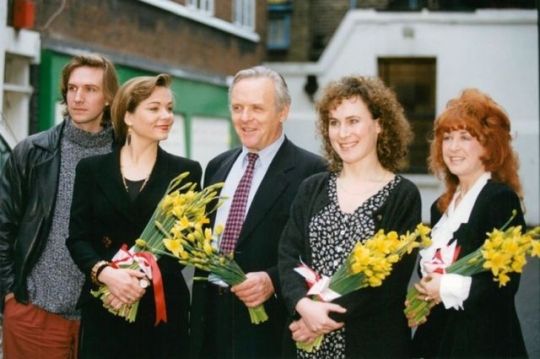
Ralph Fiennes, Theresa Russell, Sir Anthony Hopkins, Helen Schlesinger and Lynda La Plante pictured by Peter Orme at the presentation of new drama productions for the BBC network (1993)
#anthony hopkins#Sir Anthony Hopkins#anthonyhopkins#ralph fiennes#theresa russell#helen schlesinger#lynda la plante#1993
30 notes
·
View notes
Photo
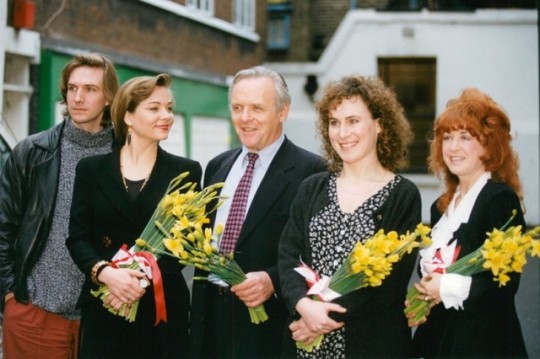
Ralph Fiennes, Theresa Russell, Sir Anthony Hopkins, Helen Schlesinger and Lynda La Plante pictured by Peter Orme at the presentation of new drama productions for the BBC network (8 FEB 1993)
46 notes
·
View notes
Text
Birthdays 10.15
Beer Birthdays
Doug Odell (1952)
Julie Nickels (1959)
Five Favorite Birthdays
Michel Foucault; philosopher, historian (1926)
Friedrich Nietzsche; German philosopher (1844)
Jim Palmer; Baltimore Orioles P (1945)
James Tissot; French artist (1836)
P.G. Wodehouse; English writer (1881)
Famous Birthdays
Italo Calvino; Italian writer (1923)
Richard Carpenter; pop singer (1946)
Chris De Burgh; rock singer (1948)
Sarah Ferguson; British royalty (1959)
John Kenneth Galbraith; economist (1908)
Samuel Adams Holyoke; composer (1762)
Lee Iacocca; businessman, Pinto-maker & apologist (1924)
Helen Hunt Jackson; writer (1830)
Tito Jackson; pop singer (1953)
Emerill Lagasse; chef (1959)
Linda Lavin; actor (1937)
Mervyn LeRoy; film director (1900)
Penny Marshall; actor, film director (1942)
Warren Miller; sports film director (1924)
Stacy Peralta; skateboarder, film director (1957)
Jean Peters; actor (1926)
Mario Puzo; writer (1921)
Tanya Roberts; actor (1955)
Arthur Schlesinger Jr.; historian (1917)
Bruno Senna; Braziliam race car driver (1983)
C.P. Snow; English writer, physicist (1905)
John L. Sullivan; boxer (1858)
Virgil; Roman writer (70 C.E.)
0 notes
Text
"THE WAY WE LIVE NOW" (2001) Review

"THE WAY WE LIVE NOW" (2001) Review
Over sixteen years ago, the BBC aired “THE WAY WE LIVE NOW”, a four-part television adaptation of Anthony Trollope's 1875 novel. Adapted by Andrew Davies and directed by David Yates, the miniseries starred David Suchet, Shirley Henderson and Matthew Macfadyen.
"THE WAY WE LIVE NOW" told the story of a Central European financier's impact upon upper-crust British society during the Victorian era. Augustus Melmotte arrives in London with his second wife and his daughter, Marie in the 1870s. Not long after his arrival, Melmotte announces a new scheme to finance a railroad project from Salt Lake City in Utah to the Gulf of Mexico. And he promises instant fortune to those who would invest in his scheme. The Melmotte family is also surrounded by a circle of decadent aristocrats and nouveau riche businessmen, all trying to get a piece of the financial pie. One of the investors is Sir Felix Carbury, a young and dissolute baronet who is quickly running through his widowed mother's savings. In an attempt to restore their fortunes, his mother, Lady Matilda Carbury writes historical potboilers - a 19th century predecessor to 20th century romance novels. She also plans to have Felix marry Marie, who is an heiress in her own right; and marry daughter Henrietta (Hetta) to their wealthy cousin, Roger Carbury. Although Marie falls in love with Felix, Melmotte has no intention of allowing his daughter to marry a penniless aristocrat. And Hetta shows no interest in Roger, since she has fallen in love with his young ward, an engineer named . However, Montague also proves to be a thorn in Melmotte's side, due to his suspicions about the legitimacy over the railroad scheme.
As one can see, the story lines that stream from Trollope's novel seemed to be plenty. In a way, the plot reminds me of the numerous story arcs that permeated 2004's "HE KNEW HE WAS RIGHT". Although some of the story arcs have nothing to do with Augustus Melmotte, nearly everyone seemed to have some connection to the financier. The exceptions to this rule proved to be the characters of American-born Mrs. Winifred Hurtle, Roger Carbury and Ruby Ruggles, a young farm girl who lives on Roger's estate. Mrs. Hurtle's story was strictly limited to her efforts to regain the affections of former lover and help Ruby deal with the licentious Sir Felix. Roger's story arc was limited to his unsuccessful efforts to win Henrietta's heart and deal with his knowledge of Paul and Mrs. Hurtle's relationship. Fortunately, "THE WAY WE LIVE NOW" seemed to possess a tighter story than "HE KNEW HE WAS RIGHT". To a certain degree.
But I cannot deny that "THE WAY WE LIVE NOW" was one of the most entertaining adaptations of a Trollope novel I have ever seen. If I must be honest, I enjoyed it more than I did "HE KNEW HE WAS RIGHT" or 1982's "THE BARCHESTER CHRONICLES". One of the reasons I enjoyed it so much was due to its portrayal of society's greed and opportunism. I have heard that Trollope had written the novel in protest against the greed and corruption of the 1870s, which resulted in the Long Depressionthat lasted between 1873 and 1879. The ironic thing is that the economic situation that Trollope believed had permeated British society during the 1870s had been around for a long time and would continue to permeate the world's economic markets time again - including the recent downturn that has cast a shadow on today's economies. Trollope's Augustus Melmotte is today's Bernie Madoff or Robert Maxwell.
Another aspect of "THE WAY WE LIVE NOW" is that it revealed the darker aspects of Victorian society on a more personal level. I did not know whether to be amused or disgusted by the manner in which young British scions such as Sir Felix Carbury scrambled to win the affections of Marie Melmotte and get their hands on her money; or desperate debutantes like Georgiana Longestaffe willing to marry Jewish banker Mr. Brehgert, despite her contempt for his religious beliefs and social position. I doubt that the likes of Georgiana would never contemplate becoming an author of cheesy novels, like Lady Carbury or marrying a man with no funds - like .
Thanks to Davies' screenplay and David Yates' direction, "THE WAY WE LIVE NOW" permeated with a richly dark and comic style that beautifully suited Trollope's tale. Hardly anyone - aside from a few such as Paul Montague, Hetta Carbury and Mr. Brehgert - was spared from the pair's biting portrayal of Trollope's characters. Two of my favorite scenes featured a ball held by the Melmottes in Episode One and a banquet in honor of the Chinese Emperor in Episode Three. The banquet scene especially had me on the floor laughing at the sight of British high society members gorging themselves on the dishes prepared by Melmotte's cook.
Although "THE WAY WE LIVE NOW" is my favorite Trollope adaptation - so far - I must admit that I had a few problems with it. One, Andrew Davies' portrayal of the Paul Montague character struck me as slightly boring. Like his literary counterpart, Paul found himself torn between his love for Hetta and his sexual past with Mrs. Hurtle. But Davies' Paul seemed so . . . noble and stalwart that I found it hard to believe this is the same gutless wonder from Trollope's novel. And if I must be brutally honest, I found his relationship with Hetta Carbury to be another example of a boring romance between two boring young lovers that seemed to permeate Victorian literature. A part of me longed for Paul to end up with Winifred Hurtle. At least he would have found himself in a more interesting romance. I have one more quibble. In a scene featuring a major quarrel between Melmotte and his daughter Marie, there was a point where both were in each other's faces . . . growling like animals. Growling? Really? Was that necessary? Because I do not think it was.
One would think I have a problem with Cillian Murphy and Paloma Baeza's performances as Paul Montague and Hetta Carbury. Trust me, I did not. I thought both gave solid and competent performances. I feel they were sabotaged by Trollope's portrayal of their characters as "the young lovers" and Davies' unwillingness to put some zing into their romance. Miranda Otto made a very interesting Mrs. Hurtle, despite her bad attempt at a Southern accent. And Allan Corduner and Fenella Woolgar both gave solid performances that I did not find particularly memorable. On the other hand, I felt more than impressed by Cheryl Campbell as the charming and somewhat manipulative Lady Carbury; Douglas Hodge as the love-sick Roger Carbury; Oliver Ford-Davies as the grasping, yet bigoted Mr. Longestaffe; Helen Schlesinger's funny performance as the clueless Madame Melmotte; a poignant performance from Jim Carter, who portrayed Mr. Brehgert; and Anne-Marie Duff, who managed to create a balance between Georgiana Longstaffe's strong-willed willingness to marry a man of another faith and her self-absorption and bigotry.
However, the three performances that stood head above the others came from David Suchet, Shirley Henderson and Matthew Macfadyen. Suchet could have easily portrayed the scheming and gregarious Augustus Melmotte as a cartoonish character. And there were times when it seemed he was in danger of doing so. But Suchet balanced Melmotte's over-the-top personality with a shrewdness and cynicism that I found appealing - especially when those traits mocked the pretentiousness and hypocrisy of British high society. Shirley Henderson proved to be the perfect person to portray Melmotte's only daughter, Marie. Superficially, she seemed like a chip off the old block. But Henderson injected a great deal of compassion and poignancy into Marie's character, making it very easy for me to sympathize toward her unrequited love for Sir Felix Carbury and the heartache she felt upon discovering his lack of love for her. Matthew Macfadyen must have finally made a name for himself in his memorable portrayal of the dissolute Sir Felix Carbury. I cannot deny that Macfadyen revealed a good deal of Sir Felix's charm. But the actor made it pretty obvious that his character's charm was at best, superficial. Considering some of the roles he has portrayed over the decade that followed "THE WAY WE LIVE NOW", I believe Macfadyen's Sir Felix must have been one of the most self-absorbed characters in his repertoire. And he did a superb job with the role. It is a pity that he never received an acting nomination or award for his performance.
One cannot talk about "THE WAY WE LIVE NOW" without pointing out the sumptuous production designs created by Gerry Scott. They were superb. With contributions from Diane Dancklefsen and Mark Kebby's art direction, Caroline Smith's set decorations, Chris Seager's photography and Andrea Galer's costume designs; Scott and his team did a wonderful job in re-creating Victorian society in the 1870s. I was especially impressed at how Galer's costumes captured the early years of that decade. I would never call Nicholas Hooper's score particularly memorable. But I cannot deny that it suited both the story's theme and setting.
Although I found a few aspects of "THE WAY WE LIVE NOW" to complain about - notably the Paul Montague and Hetta Carbury characters. I cannot deny that it is a first-rate production, thanks to Andrew Davies' adaptation, David Yates' direction and a fine cast led by David Suchet. More importantly, the story's theme of greed and corruption leading to economic chaos was not only relevant to the mid-to-late Victorian era, but also for today's society. "THE WAY WE LIVE NOW" strike me as a story for all times.

#anthony trollope#the way we live now 2001#the way we live now#david suchet#shirley henderson#cillian murphy#matthew macfadyen#paloma baeza#cheryl campbell#richard cant#allan corduner#angus wright#miranda otto#tony britton#oliver ford davies#helen schlesinger#douglas hodge#maxine peake#david bradley#toby jones#joanna david#fenella woolgar#anne-marie duff#jim carter#michael riley
1 note
·
View note
Photo
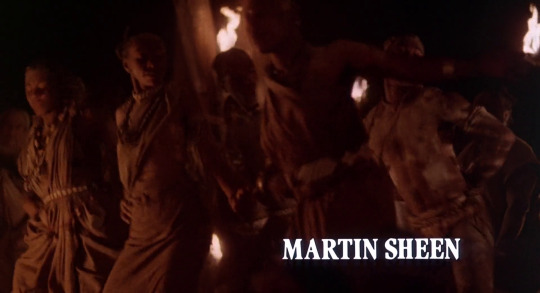
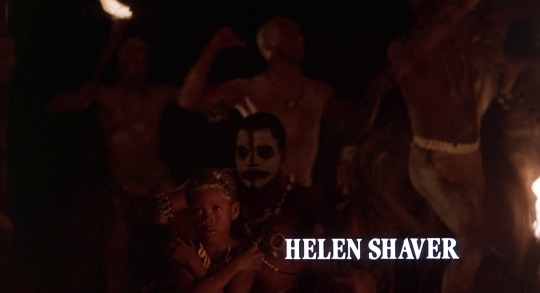


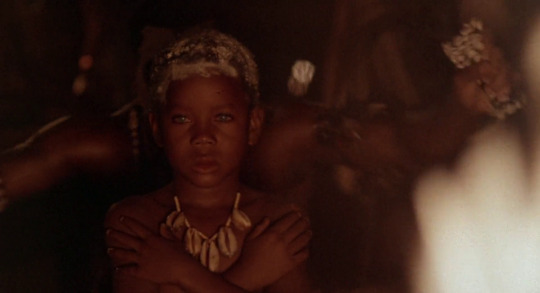


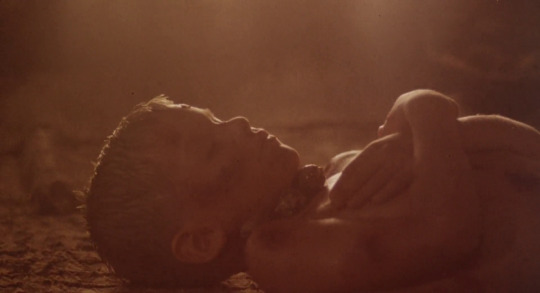

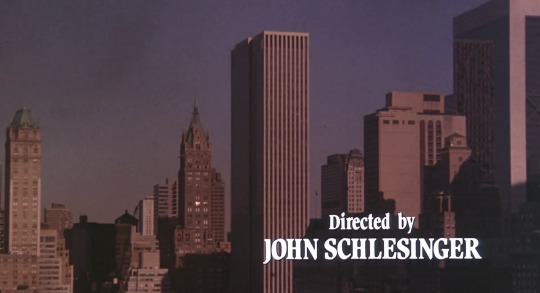
The Believers (1987), dir. John Schlesinger
15 notes
·
View notes
Text
#billy liar#film#review#criterion collection#criterion channel#john schlesinger#tom courtenay#julie christie#wilfred pickles#mona washbourne#ethel griffies#gwendolyn watts#helen fraser
1 note
·
View note
Photo
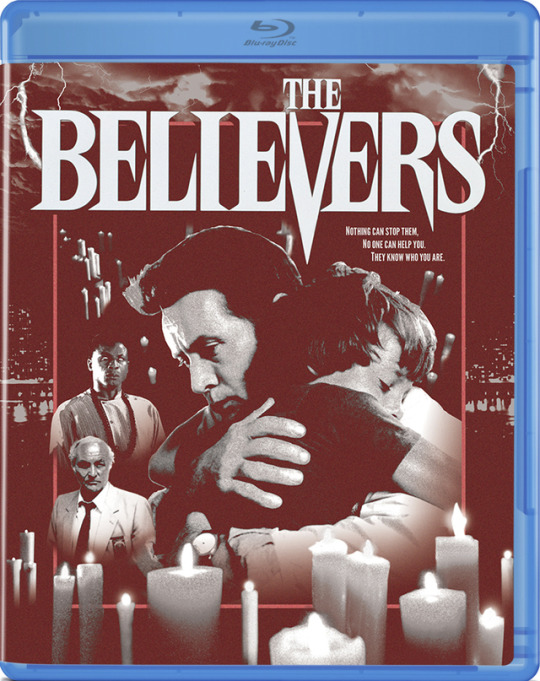
The Believers will be released on Blu-ray and DVD on June 25 via Olive Films. No special features are listed. The 1987 horror thriller is directed by John Schlesinger (Midnight Cowboy, Marathon Man).
Twin Peaks co-creator Mark Frost wrote the script, which is based on Nicholas Conde's 1982 novel The Religion. Martin Sheen, Helen Shaver, Robert Loggia, Richard Masur, Harley Cross, and Jimmy Smits star.
Following the tragic death of his wife, psychologist Cal Jamison (Martin Sheen) and his young son Chris (Harley Cross) relocate from Minneapolis to New York City to start a new life. Enlisted by Lt. McTaggert (Robert Loggia) to help solve a baffling suicide case involving voodoo, Cal soon finds himself in the middle of an investigation with ties to a Caribbean religious cult and a series of ritualistic murders that will place him and those he loves in grave danger.
#the believers#martin sheen#helen shaver#robert loggia#jimmy smits#richard masur#harley cross#olive films#dvd#gift#john schlesinger#mark frost#twin peaks#80s horror#1980s horror
18 notes
·
View notes
Text
BLOGTOBER 10/28/17: THE BELIEVERS
The first time I ever saw THE ROCKY HORROR PICTURE SHOW in a theater, I was 12 years old. My family took my little brother and me on a short vacation to New York City, and indulged my burgeoning obsession by agreeing to take me to the still-thriving cult’s home base at the Waverly Theater. While I had almost nothing on my mind other than this opportunity to commune with the original cultists, and practice with them in their hallowed chapel, I was already ensconced in a real world of faith and ritual that I had much less ability to address. We stayed in the apartment of my parents’ friend Phyllis Galembo, a noted photographer of religious practice and folk conventions in Haiti, Brazil, Cuba, Jamaica, Nigeria, Sierra Leone, Berkina-Faso, Zambia, South Afica, Egungun and Gelede Benin. I had met Phyllis a few times; I remembered her as warm, energetic, and fairly hilarious. I was curious about her work in my childish manner, without having developed a shred of the intellectual wherewithal to think usefully about these other cultures. In spite of what I knew, I was completely startled by her apartment. It was fairly tiny, as per Manhattan standards, and it thrummed with music that I could only identify as “foreign”. Her walls were covered from floor to ceiling with masks, photographs, costume pieces and art objects from her travels. The effect was overpoweringly fascinating. I followed her around the place for a little bit while she prepared to vacate, and then, like a complete asshole, I asked, because it was my only point of reference for my surroundings: “Have you ever seen THE BELIEVERS?” She tersely spat something about it being “racist trash”, putting the topic straight to bed.
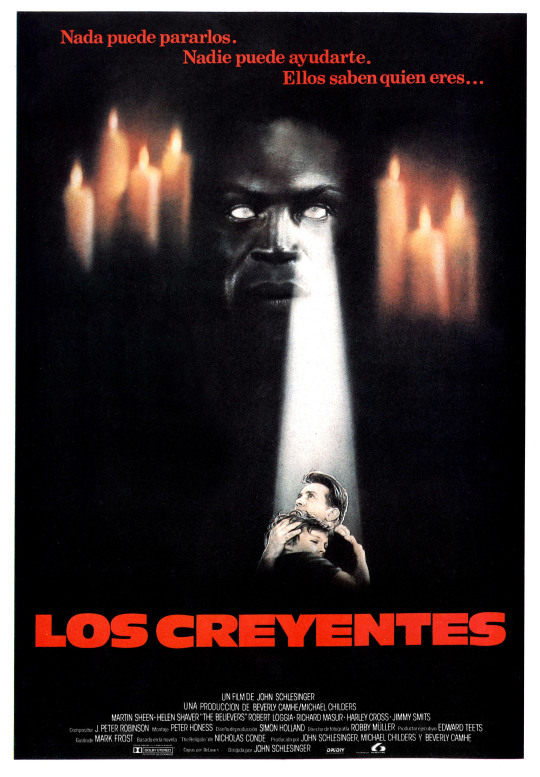
THE BELIEVERS was a movie that I had seen quite a few times on Fox’s weekend horror matinee, my rare and treasured opportunity to watch scary movies, edited for television, with my nose pressed to the screen of our tiny black and white set. This 1987 John Schlesinger thriller concerned a recently widowed police psychiatrist who finds himself embroiled in the grim doings of a deadly Santeria cult. I loved it. Martin Sheen is the traumatized lead, who is trying to juggle a new love with monitoring his young son’s mental health, as a series of apparent human sacrifices arises in New York City. The inimitable, and here, white-eyed Malick Bowens plays a Pied Piper character who makes bloodthirsty acolytes out of rich white socialites who can never have too much money or power. An attenuated dread underlies the film’s seductive, overcast sleepiness, which blankets its intimate images of the New York that is not pictured on postcards. The pensive uncertainty that pervades THE BELIEVERS is punctuated, rarely and unpredictably, with gamey gore, or live bodies erupting with pestilence. While it never achieves the profundity of something like THE EXORCIST, it is not without moments of pathos, like the mourning process of losing one’s mind that a young Jimmy Smitts must undergo. THE BELIEVERS may not be deep, but it is strong.
This is all, of course, without mentioning the issue of race. When the movie came out in 1987, it may still have been possible for many audiences to ignore the movie’s essential xenophobia–that is, more possible than it is now, when discussions of racism make the news with much greater frequency detail, even if the vast majority of us are still struggling to address it properly. Viewers who were primed to condemn negative imagery related to slaves or “savages” were not as often enabled to, for instance, recognize distorted messaging about Afro-Carribean religions that developed under colonial duress. THE BELIEVERS attempts to exonerate itself by taking the popular tack of sorting ethnic characters into “good guys” and “bad guys”. It presents various intelligent, complex, and well-intentioned non-white professionals, often in beautifully photographed Black and Brown neighborhoods where Santeria is commonplace, who wind up serving as a counterpoint to the literally-dark and mysterious interlopers whose activities point to the profoundly evil potential of their shared religion. We still do this today, with this same thematic material, since now we have the option of assigning the locus of evil to Palo Mayombe, a religion whose public image has been permanently and popularly tainted by the real-life murder cult of Adolfo de Jesus Constanzo. Many people seem to get a false sense of progress from the fact that shows like Criminal Minds now pompously explain to viewers that Santeria is a nice “one of the good ones” religion without blood sacrifice, unlike that nasty Palo business. THE BELIEVERS had no such contemporary convenience, and has to settle for glibly parsing Santeria from “brujeria”. If the movie is unclear about the nature of Santeria in general, other than some suggestions that it is normal and typically benign, it is not exactly helpful to add to this hazy mix a blacker-than-black witch doctor who has come to America to chew up little boys like some fairy tale ogre.

Does it help that rich white people are the majority doers of evil in THE BELIEVERS? I think the answer is, not totally, but somewhat. There’s something to the notion that the serial child murderers that Martin Sheen encounters are only happening because the greedy desires of Manhattan’s elite insist upon them. And it isn’t only the posh, grown-up ski school villain types, either; Sheen will soon find among the guilty his own ostensibly liberal pals, whose multi-culti home decor serves as a pushy declaration of the owners’ worldliness. Indeed, in spite of their apparent desperation to be perceived as leaping over cultural boundaries, these dashiki-clad white folks are only truly interested in non-anglo cultures when there exists the promise of supernatural power that may beget even greater material wealth. It’s actually a very good allegory for the diluted, cherry-picked amalgam spirituality that festers in the corners of headshops and new age bookstores, where aimless Americans browse for artifacts that will help them “manifest” more love, sex, or money, or reflect negative energies back upon those who have allegedly cursed them–all without having to spend so much as a minute learning about what an orisha is or where dream catchers come from. It is difficult to get past the cartoonish positioning of Malick Bowens as a sort of antichrist, and the way that this real-life religion is depicted as a tool to drown “civilized” society in its own blood. But, at least the movie more than flirts with the option of accusing our white upperclass of polluting and perverting other cultures for the furtherance of their white upperclass endeavors. At its best, THE BELIEVERS seems to say that if this Afro-Carribean religion serves evil, then it is white Americans who make it so.
I was a little nervous about watching THE BELIEVERS as an adult, but I found that I still like it a lot, as a moody, finely crafted piece of entertainment. It was probably my first exposure to Robert Loggia, and it’s impossible to throw that away. For better or worse, it is also impossible to avoid the arguments it raises, in spite of itself, about how to treat the subconsciously malign motivations of good movies. In this context, it’s probably best for me to just say that the number of movies I’ve reviewed here that involve something like naked ladies being chased around with knives, should tell you how I ultimately feel about this level of moralizing about art. So, I’ll just adjourn lightheartedly by offering up to anyone who is reading this, who wants to know who I thought was the most ludicrous celebrity “regular” at the mixed-witchcraft shop up the street from where I used to work, that I’ll happily tell you over DM.
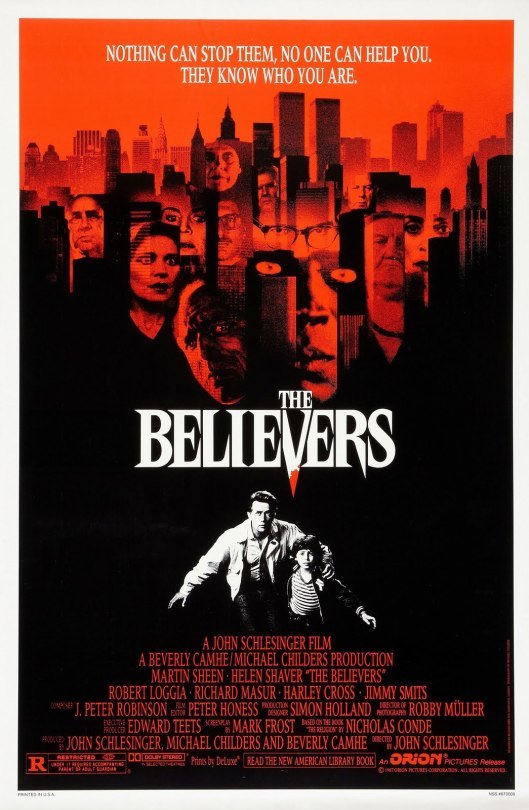
#blogtober#the believers#john schlesinger#martin sheen#helen shaver#robert loggia#jimmy smitts#malick bowens#horror#santeria#voodoo#mark frost#thriller
6 notes
·
View notes